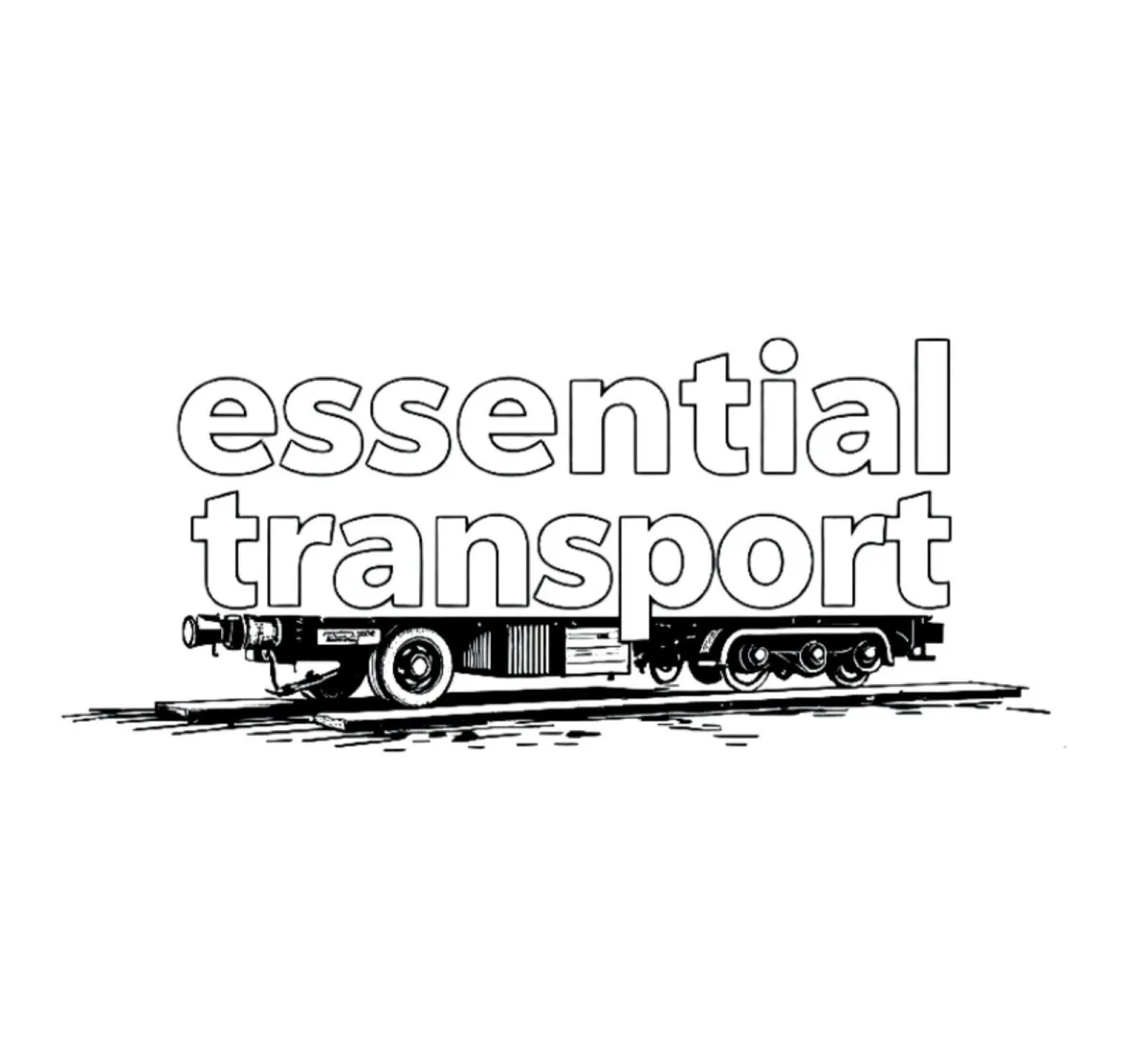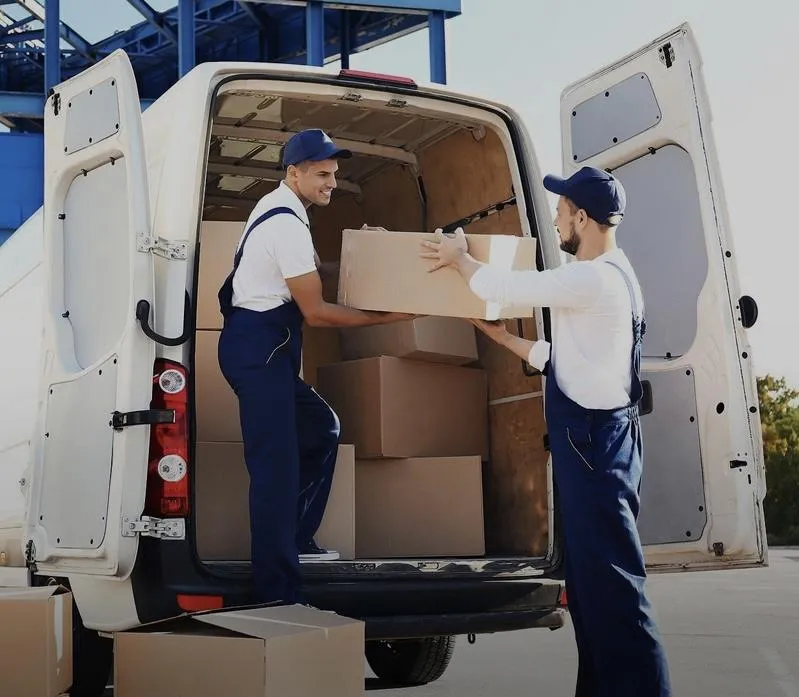Smoove Move Courier
SMÜVguard® Coverage Eligible
★ ★ ★ ★ ★
Rates Include:Courier/Transport
$2.49
Smoove Move Mover
SMÜVguard® Coverage Eligible
★ ★ ★ ★ ★
Rates Include:Load/Unload
$149.00
Smoove Move Logistics
SMÜVguard® Coverage Eligible
★ ★ ★ ★ ★
Rates Include:Logistic/Operation
$999.00
Sort & Filter

Smoove Move Courier
SMÜVguard® Coverage Eligible
★ ★ ★ ★ ★
Rates Include:
Courier/Transport
Price quote:
mil
$2.15

Smoove Move Mover
SMÜVguard® Coverage Eligible
★ ★ ★ ★ ★
Rates Include:
Load/Unload
Price quote:
USD
$150.00

Smoove Move Logistic
SMÜVguard® Coverage Eligible
★ ★ ★ ★ ★
Rates Include:
Logistic/Operation
Price quote:
USD
$999.00

EasyNest
SMÜVguard® Coverage Eligible
★ ★ ★ ★ ★
Rates Include:
Load/Unload
Price quote:
USD
$149.98

True Path America
SMÜVguard® Coverage Eligible
★ ★ ★ ★ ★
Rates Include:
Load/Unload
Price quote:
$169.98
USD

Essential Transport
SMÜVguard® Coverage Eligible
★ ★ ★ ★ ★
Rates Include:
Load/Unload
Price quote:
$199.98
USD
Smoove Move Courier
★ ★ ★ ★ ★
Safeguard® Coverage Eligible
Price varies on selected coverage
Your Quote Includes:
4hrs / 2hrs / 1hr / ASAP
(regular business days)
Courier/Transport

$2.75/mil
Smoove Move Mover
★ ★ ★ ★ ★
Safeguard® Coverage Eligible
Price varies on selected coverage
Your Quote Includes:
2 Person Crew,
2 Hours of Help
Load/Unload

$75.00/hr
Smoove Move Logistic
★ ★ ★ ★ ★
Safeguard® Coverage Eligible
Price varies on selected coverage
Your Quote Includes:
Logistic/Operation

$13,999.00

Smoove Move Movers
SMÜVguard® Coverage Eligible
★ ★ ★ ★ ★
Rates Include:
Load/Unload
Price quote:
$219.98
USD
EasyNest
★ ★ ★ ★ ★
Safeguard® Coverage Eligible
Price varies on selected coverage
Your Quote Includes:
2 Person Crew,
2 Hours of Help
Load/Unload

$74.99/hr
True Path America
★ ★ ★ ★ ★
Safeguard® Coverage Eligible
Price varies on selected coverage
Your Quote Includes:
2 Person Crew,
2 Hours of Help
Load/Unload

$84.99/hr
Essential Transport
★ ★ ★ ★ ★
Safeguard® Coverage Eligible
Price varies on selected coverage
Your Quote Includes:
2 Person Crew,
2 Hours of Help
Load/Unload

$99.99/hr
Smoove Move Movers
★ ★ ★ ★ ★
Safeguard® Coverage Eligible
Price varies on selected coverage
Your Quote Includes:
2 Person Crew,
2 Hours of Help
Load/Unload

$109.99/hr

5 Reasons to Switch to a Mobile Logistics Provider
5 Reasons to Switch to a Mobile Logistics Provider [2025 Guide]
Every year, supply chains get more complex and customer expectations push even higher. Companies that stick with slow, outdated systems find it hard to keep up. Mobile logistics providers offer a smarter way forward. These providers use connected apps, real-time tracking, and smart route planning to make supply chain management easier from end to end.
A mobile logistics provider is a company that brings you all-in-one digital tools for managing your fleet, shipments, and inventory—straight from your phone, tablet, or computer. You get instant updates, custom dashboards, and automation features that help you work faster and avoid costly mistakes.
Digital transformation isn't a buzzword anymore—it's the secret to staying flexible and competitive. Switching to a mobile logistics provider lets your business harness these new tools, putting real-time data and automation right where your team needs them most. If being future-ready matters to you, making the switch is no longer optional—it's essential. In this post, you'll learn the five main reasons why this shift pays off for modern supply chains.
Enhanced Real-Time Visibility and Tracking

Photo by RDNE Stock project
Today’s logistics are all about knowing what’s happening every second. Mobile logistics providers use smart technology to keep you in the loop—no blind spots, no hours of guessing where your trucks or shipments are. With tech like IoT, 5G, and powerful data analytics, you get updates and insights on demand. This doesn’t just make your job easier; it can save you money and keep your customers happy.
How Mobile Logistics Providers Use IoT, 5G, and Live Data
Mobile logistics providers bring together the latest tech to track every move your fleet or shipment makes:
IoT Sensors: Tiny devices attached to trucks, containers, or packages relay temperature, location, speed, and even whether doors are open or shut.
5G Networks: Super-fast, low-latency connections mean updates come through in seconds. If your truck is stuck in traffic or behind schedule, you’ll know right away.
Real-Time Dashboards: All the data streams into simple dashboards you can check from any device, anywhere.
When you use these tools, fleet managers always have the facts handy. This means smarter decisions and fewer surprises. For a deep dive on how IoT boosts supply chain transparency, see this resource from SmartMakers: Increasing transparency in the supply chain with IoT.
Boosting Transparency for Everyone
With real-time tracking, you’re not the only one who wins. Customers, partners, and even drivers all benefit:
Customers see live status updates and ETAs, so they’re rarely left in the dark.
Drivers get smarter route suggestions and instant delivery updates.
Operations teams spot slow-downs or missed deliveries as they happen, not hours later.
By putting useful data straight into people’s hands, fewer calls or emails are needed. This saves time and keeps everyone on the same page, from dispatchers to customers. Want to see how IoT drives better decision-making for managers and fleet ops? Check out this breakdown from Ozvid: Revolutionizing Supply Chain Management and Logistics with IoT.
Predictive Analytics: Seeing Problems Before They Happen
Today’s logistics don’t just react—they predict. Mobile platforms use all that real-time data to predict when deliveries might run late, when a vehicle needs repairs, or when the weather could cause trouble.
Here’s what you can expect:
Automated Alerts: If a shipment is likely to miss its window, the system notifies you—fast.
Preventative Actions: Know which vehicles need servicing before they break down.
Better Planning: Improve inventory forecasts and plan routes around traffic or weather delays.
According to Red Arrow Logistics, these real-time analytics tools make logistics smoother and more reliable by offering full visibility at each step. Learn more here: The Power of Data Analytics in Logistics Optimization.
Smarter, Faster Decision Making
Instant visibility means no guesswork and fewer headaches. Operations teams can:
Reroute shipments in real-time if there’s a delay or accident.
Update customers right away if bad weather threatens a delivery.
Review trends from live data to find process improvements.
Leading companies use platforms that help them respond instantly, not hours later. This approach dramatically reduces costly delays and helps prevent mistakes.
Switching to a mobile logistics provider means you’re not just tracking progress—you’re building confidence at every step. The tech turns complex operations into easy-to-track workflows with data you can trust.
Cost Efficiency and Scalability Advantages
Choosing a mobile logistics provider isn’t just about keeping up with trends—it’s about growing your business the smart way. Two of the biggest reasons to make the switch? Drastically reduced costs and a much easier time scaling up or down as your needs change. Mobile solutions help you cut out the old headaches and hidden expenses of traditional systems, so you only pay for what you use, when you use it.
Reduced Upfront and Operational Costs: How Digital and Mobile Beat Outdated Solutions

Photo by Kampus Production
Forget about investing tens of thousands up front in bulky hardware or software. Mobile logistics platforms and robotic tools shift your spending from heavy capital costs to simple subscription fees or usage-based pricing. You avoid costly licenses, sprawling server rooms, and endless maintenance bills.
Here’s where savings add up:
No major hardware investments: Most mobile solutions work with devices your team already owns—like smartphones or tablets.
Lower IT and maintenance bills: Cloud-based platforms keep things updated automatically and often include support.
Pay only for what you use: Scale subscriptions or robot deployments up and down with demand.
Companies also cut costs thanks to smarter routing and fewer mistakes. By replacing manual paperwork with automated tasks, you speed up processing and reduce human errors. Real results? Time saved, happier customers, and a healthier bottom line.
For a look at how companies use mobile apps to optimize costs, check out this case study on cost savings with mobile logistics apps.
Rapid Deployment with Minimal Downtime
The old way of doing things? Wait weeks—or even months—for new systems to get up and running. With mobile logistics, things move way faster. These solutions are designed for quick setup and smooth go-lives, so you’re not losing days or weeks just to get started.
Here’s what makes mobile logistics deployment so pain-free:
Plug-and-play onboarding: Download apps, set up user accounts, and you’re up and running in minutes—not days.
Remote training: Teams can learn straight from their devices, perfectly suited for a workforce spread across multiple locations.
No need for huge infrastructure overhauls: Modern platforms adapt to your current tech and workflows with minimal disruption.
If you want to expand or shift operations—maybe you’re opening a new warehouse or ramping up for peak season—it’s as simple as adding new users or devices to the platform. The barrier to trying something new is much lower; you can experiment and adapt without risking your whole operation.
Logistics partners that have embraced mobile robotics often find they can flex to meet seasonal demand or growth—without hiring extra IT staff or shutting down current ops. For a real-world approach to scaling with mobile robots, see how robotic-enabled workflows scale up to match demand.
Switching to a mobile logistics provider means you’re set up to scale—without breaking the bank or slowing down. Businesses can finally ditch the old “one size fits all” approach and build a flexible, future-ready supply chain.

5 Reasons to Switch to a Mobile Logistics Provider
5 Reasons to Switch to a Mobile Logistics Provider [2025 Guide]
Every year, supply chains get more complex and customer expectations push even higher. Companies that stick with slow, outdated systems find it hard to keep up. Mobile logistics providers offer a smarter way forward. These providers use connected apps, real-time tracking, and smart route planning to make supply chain management easier from end to end.
A mobile logistics provider is a company that brings you all-in-one digital tools for managing your fleet, shipments, and inventory—straight from your phone, tablet, or computer. You get instant updates, custom dashboards, and automation features that help you work faster and avoid costly mistakes.
Digital transformation isn't a buzzword anymore—it's the secret to staying flexible and competitive. Switching to a mobile logistics provider lets your business harness these new tools, putting real-time data and automation right where your team needs them most. If being future-ready matters to you, making the switch is no longer optional—it's essential. In this post, you'll learn the five main reasons why this shift pays off for modern supply chains.
Enhanced Real-Time Visibility and Tracking

Photo by RDNE Stock project
Today’s logistics are all about knowing what’s happening every second. Mobile logistics providers use smart technology to keep you in the loop—no blind spots, no hours of guessing where your trucks or shipments are. With tech like IoT, 5G, and powerful data analytics, you get updates and insights on demand. This doesn’t just make your job easier; it can save you money and keep your customers happy.
How Mobile Logistics Providers Use IoT, 5G, and Live Data
Mobile logistics providers bring together the latest tech to track every move your fleet or shipment makes:
IoT Sensors: Tiny devices attached to trucks, containers, or packages relay temperature, location, speed, and even whether doors are open or shut.
5G Networks: Super-fast, low-latency connections mean updates come through in seconds. If your truck is stuck in traffic or behind schedule, you’ll know right away.
Real-Time Dashboards: All the data streams into simple dashboards you can check from any device, anywhere.
When you use these tools, fleet managers always have the facts handy. This means smarter decisions and fewer surprises. For a deep dive on how IoT boosts supply chain transparency, see this resource from SmartMakers: Increasing transparency in the supply chain with IoT.
Boosting Transparency for Everyone
With real-time tracking, you’re not the only one who wins. Customers, partners, and even drivers all benefit:
Customers see live status updates and ETAs, so they’re rarely left in the dark.
Drivers get smarter route suggestions and instant delivery updates.
Operations teams spot slow-downs or missed deliveries as they happen, not hours later.
By putting useful data straight into people’s hands, fewer calls or emails are needed. This saves time and keeps everyone on the same page, from dispatchers to customers. Want to see how IoT drives better decision-making for managers and fleet ops? Check out this breakdown from Ozvid: Revolutionizing Supply Chain Management and Logistics with IoT.
Predictive Analytics: Seeing Problems Before They Happen
Today’s logistics don’t just react—they predict. Mobile platforms use all that real-time data to predict when deliveries might run late, when a vehicle needs repairs, or when the weather could cause trouble.
Here’s what you can expect:
Automated Alerts: If a shipment is likely to miss its window, the system notifies you—fast.
Preventative Actions: Know which vehicles need servicing before they break down.
Better Planning: Improve inventory forecasts and plan routes around traffic or weather delays.
According to Red Arrow Logistics, these real-time analytics tools make logistics smoother and more reliable by offering full visibility at each step. Learn more here: The Power of Data Analytics in Logistics Optimization.
Smarter, Faster Decision Making
Instant visibility means no guesswork and fewer headaches. Operations teams can:
Reroute shipments in real-time if there’s a delay or accident.
Update customers right away if bad weather threatens a delivery.
Review trends from live data to find process improvements.
Leading companies use platforms that help them respond instantly, not hours later. This approach dramatically reduces costly delays and helps prevent mistakes.
Switching to a mobile logistics provider means you’re not just tracking progress—you’re building confidence at every step. The tech turns complex operations into easy-to-track workflows with data you can trust.
Cost Efficiency and Scalability Advantages
Choosing a mobile logistics provider isn’t just about keeping up with trends—it’s about growing your business the smart way. Two of the biggest reasons to make the switch? Drastically reduced costs and a much easier time scaling up or down as your needs change. Mobile solutions help you cut out the old headaches and hidden expenses of traditional systems, so you only pay for what you use, when you use it.
Reduced Upfront and Operational Costs: How Digital and Mobile Beat Outdated Solutions

Photo by Kampus Production
Forget about investing tens of thousands up front in bulky hardware or software. Mobile logistics platforms and robotic tools shift your spending from heavy capital costs to simple subscription fees or usage-based pricing. You avoid costly licenses, sprawling server rooms, and endless maintenance bills.
Here’s where savings add up:
No major hardware investments: Most mobile solutions work with devices your team already owns—like smartphones or tablets.
Lower IT and maintenance bills: Cloud-based platforms keep things updated automatically and often include support.
Pay only for what you use: Scale subscriptions or robot deployments up and down with demand.
Companies also cut costs thanks to smarter routing and fewer mistakes. By replacing manual paperwork with automated tasks, you speed up processing and reduce human errors. Real results? Time saved, happier customers, and a healthier bottom line.
For a look at how companies use mobile apps to optimize costs, check out this case study on cost savings with mobile logistics apps.
Rapid Deployment with Minimal Downtime
The old way of doing things? Wait weeks—or even months—for new systems to get up and running. With mobile logistics, things move way faster. These solutions are designed for quick setup and smooth go-lives, so you’re not losing days or weeks just to get started.
Here’s what makes mobile logistics deployment so pain-free:
Plug-and-play onboarding: Download apps, set up user accounts, and you’re up and running in minutes—not days.
Remote training: Teams can learn straight from their devices, perfectly suited for a workforce spread across multiple locations.
No need for huge infrastructure overhauls: Modern platforms adapt to your current tech and workflows with minimal disruption.
If you want to expand or shift operations—maybe you’re opening a new warehouse or ramping up for peak season—it’s as simple as adding new users or devices to the platform. The barrier to trying something new is much lower; you can experiment and adapt without risking your whole operation.
Logistics partners that have embraced mobile robotics often find they can flex to meet seasonal demand or growth—without hiring extra IT staff or shutting down current ops. For a real-world approach to scaling with mobile robots, see how robotic-enabled workflows scale up to match demand.
Switching to a mobile logistics provider means you’re set up to scale—without breaking the bank or slowing down. Businesses can finally ditch the old “one size fits all” approach and build a flexible, future-ready supply chain.